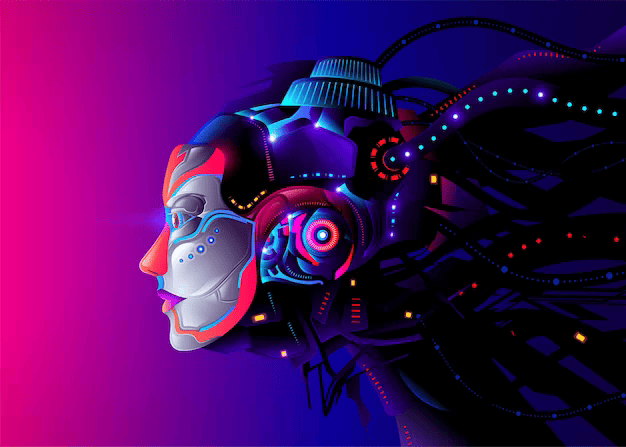The digital realm is a dynamic landscape, evolving at a rapid pace and reshaping the way artists engage with their craft. For creators navigating the exciting but complex intersection of NFTs, AI, and the metaverse in 2024, the journey requires more than just mastering the creation of NFT art. Technological advancements are propelling the art world into uncharted territories, and artists must carefully harness the power of AI and the metaverse to thrive in this new era.
One crucial aspect that comes into play is the emergence of NFT marketplace development services. These services play a pivotal role in facilitating the seamless integration of artists into the NFT ecosystem. NFT marketplaces are the platforms where artists can showcase and sell their NFT art, making it essential for creators to understand and leverage NFT marketplace development services to enhance their presence in this evolving digital landscape.
Technological Intervention: Shifting Perceptions
Once met with skepticism, the intrusion of technology into the art creation process is now a defining feature of the contemporary art scene. While AI-generated art pieces were initially met with apprehension, the tide is turning. The entry of NFTs and the metaverse is ushering in a transformative wave that promises to redefine the modern art scenario in 2024.
NFTs: A Continuation of the Evolution
In 2021, the art world witnessed a seismic shift with the introduction of NFTs. This groundbreaking technology faced a decline in interest, with a notable 96 percent decrease in NFT sales within a year. However, recent developments, such as the release of an NFT collection by renowned pop art artist Takashi Murakami, have reignited interest in this space.
Despite vulnerabilities, NFT technology still enjoys support from creators and platforms. Artists are exploring NFTs for various commercial and social applications, highlighting the need for a comprehensive NFT marketplace guide to navigate this decentralized and democratized art world. Blockchain, a cornerstone of NFTs, is no longer just a buzzword but a trusted technology that authenticates artwork, safeguarding it from piracy and duplication.
Crafting in the Digital Realm: Navigating NFT Art Creation
While the initial excitement around NFTs may have subsided, the process of creating NFT art remains accessible to artists. No longer restricted to digital geniuses, the steps to create NFT art are simplified when registered with a Blockchain platform. However, many artists are still finding their footing in the NFT world, emphasizing the need for comprehensive guidance to scale the ladder of this transformative landscape.
AI: The Rise of Automated Creativity
The year 2022 marked the advent of Artificial Intelligence into the art world, serving as a revolutionary change following the NFT wave. AI image generators like Dall-E and Midjourney showcased the potential of algorithms in creating art. Users can generate art by typing a brief, but as award-winning digital artist Jason Allen emphasizes, the accuracy of the prompt is pivotal in generating unique and creative AI-based art.
The fear surrounding AI’s ascent in the art world revolves around the potential erosion of the significance of human creators. Questions linger about where to draw the line between human and artificial creativity. The ease with which algorithms can generate logos and the looming copyright concerns underscore the transformative impact of AI on the art landscape.
The Metaverse: A Canvas of Virtual Reality
The metaverse, a virtual-reality space where users interact with computer-generated environments, is poised to reach a staggering user base of 2,633 million by 2030. Artists are experimenting with virtual and augmented reality to engage audiences in innovative ways. The Mosul Heritage Museum’s use of virtual reality to showcase a recreated version of Iraq’s heritage exemplifies the metaverse’s potential for cultural preservation.
Yet, unanswered questions about metaverse ownership and its impact on creativity and the socio-economic future of digital art persist. The dominance of entities like Meta raises concerns about potential dilution of artistic works for commercial interests, pushing artists to consider NFTs as a refuge to safeguard their creations.
Embracing the Future: Navigating the Confluence
As we navigate the digital renaissance, the future of art in the digital space hinges on artists’ ability to adapt and protect their interests. Technology has undeniably brought about revolutionary changes in the art world, with NFTs, AI, and the metaverse serving as catalysts for this transformation.
Artists can bring their creations to the digital space through NFTs and AI-generated art, emphasizing the importance of a distinct visual identity. In a crowded NFT marketplace, an NFT logo becomes a crucial element for artists to stand out amidst the evolving landscape.
An AI logo generator further simplifies the process, offering multiple logo ideas based on a brief description of the business and art field. This tool’s versatility extends to producing crypto logos for the burgeoning cryptocurrency space, aligning with the changing dynamics of the digital art world.
Conclusion
the digital art landscape of 2024 is a dynamic canvas where artists and technology coexist. As the symbiotic relationship between art and technology continues to evolve, creators must stay attuned to the shifting trends and technologies that shape their digital journey.
While an NFT market logo can undoubtedly enhance an artist’s visibility in a crowded marketplace, it’s crucial to recognize the broader changes that NFTs, AI, and the metaverse are ushering in. The rapid evolution of technology requires artists to keep pace to protect their interests in this ever-changing digital world.
As we embrace the unknowns of the future, one thing is certain: the amalgamation of art and technology is an unstoppable force shaping the modern age. Artists and technologists must collaborate, finding innovative solutions to the challenges that arise in this exciting yet unpredictable digital frontier.
